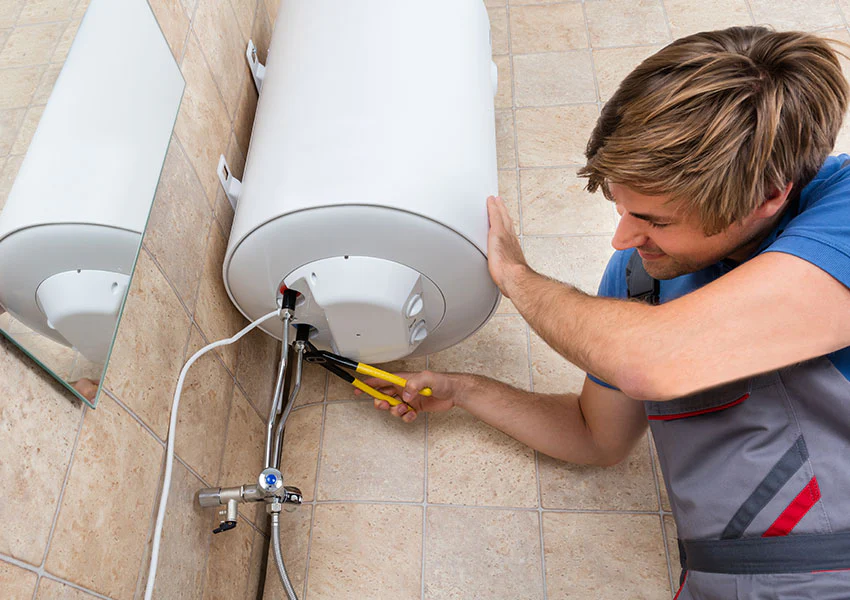How to Properly Maintain Your Home's Hot Water SystemHow to Maintain Your Home's Hot Water System in Good Condition
How to Properly Maintain Your Home's Hot Water SystemHow to Maintain Your Home's Hot Water System in Good Condition
Blog Article
Have you been searching for know-how concerning Tips on Maintaining a Water Heater?

Hot water is vital for day-to-day convenience, whether it's for a refreshing shower or cleaning recipes. To ensure your warm water system runs efficiently and lasts much longer, routine upkeep is key. This article offers functional tips and insights on just how to maintain your home's hot water system to prevent interruptions and costly fixings.
Introduction
Preserving your home's warm water system may appear daunting, however with a couple of easy actions, you can ensure it runs smoothly for many years to come. This guide covers every little thing from comprehending your hot water system to do it yourself upkeep suggestions and recognizing when to hire specialist assistance.
Importance of Preserving Your Warm Water System
Regular maintenance not just extends the life expectancy of your warm water system yet also guarantees it operates effectively. Ignoring upkeep can bring about decreased efficiency, higher energy bills, and even premature failure of the system.
Indications Your Warm Water System Demands Upkeep
Recognizing when your warm water system requires focus can avoid major problems. Watch out for indicators such as inconsistent water temperature, unusual noises from the heater, or rusty water.
Comprehending Your Hot Water System
Before diving into upkeep jobs, it's handy to understand the basic components of your warm water system. Normally, this includes the hot water heater itself, pipelines, anode poles, and temperature level controls.
Month-to-month Upkeep Tasks
Routine regular monthly checks can help catch minor problems before they intensify.
Purging the Hot Water Heater
Flushing your water heater gets rid of debris accumulation, enhancing effectiveness and lengthening its life.
Monitoring and Changing Anode Rods
Anode poles protect against deterioration inside the container. Inspecting and replacing them when worn out is essential.
Examining and Adjusting Temperature Level Setups
Changing the temperature settings ensures optimum efficiency and safety and security.
Do It Yourself Tips for Upkeep
You can execute numerous maintenance tasks yourself to keep your warm water system in leading problem.
Looking for Leaks
Regularly evaluate pipelines and links for leaks, as these can result in water damage and higher costs.
Examining Stress Alleviation Valves
Examining the stress safety valve ensures it functions correctly and prevents excessive pressure buildup.
Shielding Pipelines
Insulating warm water pipelines decreases heat loss and can save power.
When to Call an Expert
While DIY maintenance is beneficial, some concerns need expert proficiency.
Facility Problems Calling For Expert Help
Instances consist of major leakages, electrical issues, or if your water heater is constantly underperforming.
Routine Expert Upkeep Advantages
Professional upkeep can include thorough examinations, tune-ups, and making sure compliance with safety criteria.
Final thought
Normal upkeep of your home's warm water system is important for performance, durability, and cost financial savings. By following these pointers and knowing when to seek specialist assistance, you can ensure a trusted supply of hot water without unexpected disturbances.
How to Maintain an Instant Hot Water Heater
Before tinkering with your hot water heater, make sure that it’s not powered on. You also have to turn off the main circuit breaker and shut off the main gas line to prevent accidents. Also turn off the water valves connected to your unit to prevent water from flowing into and out of the appliance. 2. When you’re done, you have to detach the purge valves’ caps. These look like the letter “T” and are situated on either side of the water valves. Doing so will release any pressure that has accumulated inside the valves while at the same time avoid hot water from shooting out and burning your skin. 3. When the purge valves’ caps are removed, you have to connect your hosing lines to the valves. Your unit should have come with three hoses but if it didn’t, you can purchase these things from any hardware or home repair shops. You can also get them from retail stores that sell water heating systems. Read the user’s manual and follow it to complete this task properly. When the hosing lines are connected, open the purge port’s valves. 4. You should never use harsh chemical cleaners or solutions when cleaning your unit. Make use of white vinegar instead. It should be undiluted and you’ll probably use about 2 gallons. 5. Now flush your water heater. This task should probably take about 40 minutes. We can’t give you specific directions for this because the procedure is carried out depending on the type, model and brand of your heater. With that being said, refer to the user’s manual. 6. When you’re done draining the unit, you have to turn off the purge port valves again. Remove the hosing lines that you earlier installed on each of the water valves. Put the valve caps (purge port) back in their respective places and be very careful so as not to damage the rubber discs that are found inside these caps. 7. Now that everything’s back in place, check your user’s manual again to find out how to reactivate your water heating system. 8. Once it is working, turn one of your hot water faucets on just to let air pass through the heater’s water supply pipes. Leave the tap on until water flows smoothly out of it. https://www.orrplumbing.com/blog/2014/september/how-to-maintain-an-instant-hot-water-heater/

As a keen person who reads about Tips For Maintaining Your Hot Water Heater, I figured sharing that editorial was worth the trouble. If you liked our post please don't forget to share it. Bless you for your time. Kindly come by our site back soon.
Give Me A Quote! Report this page